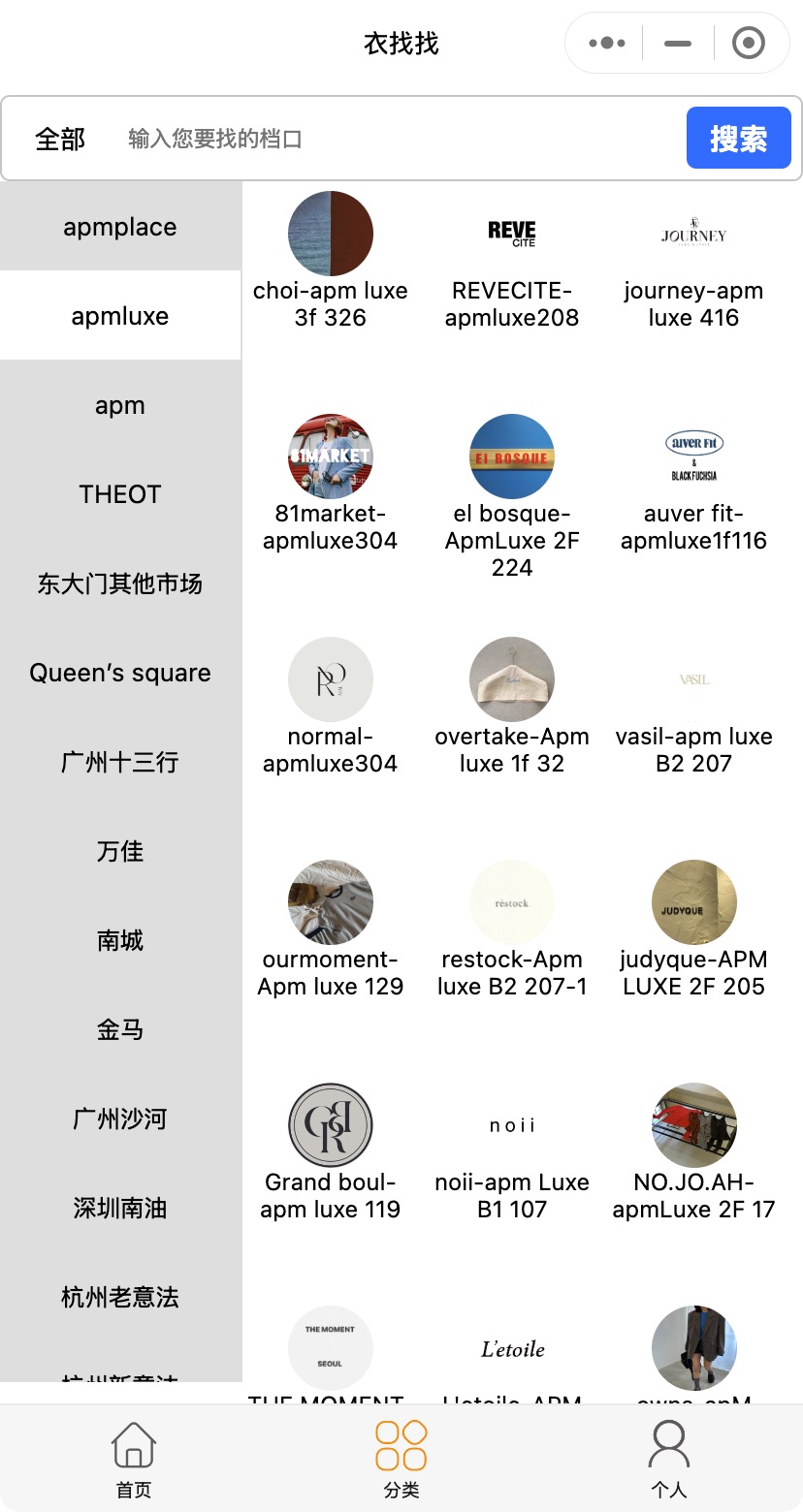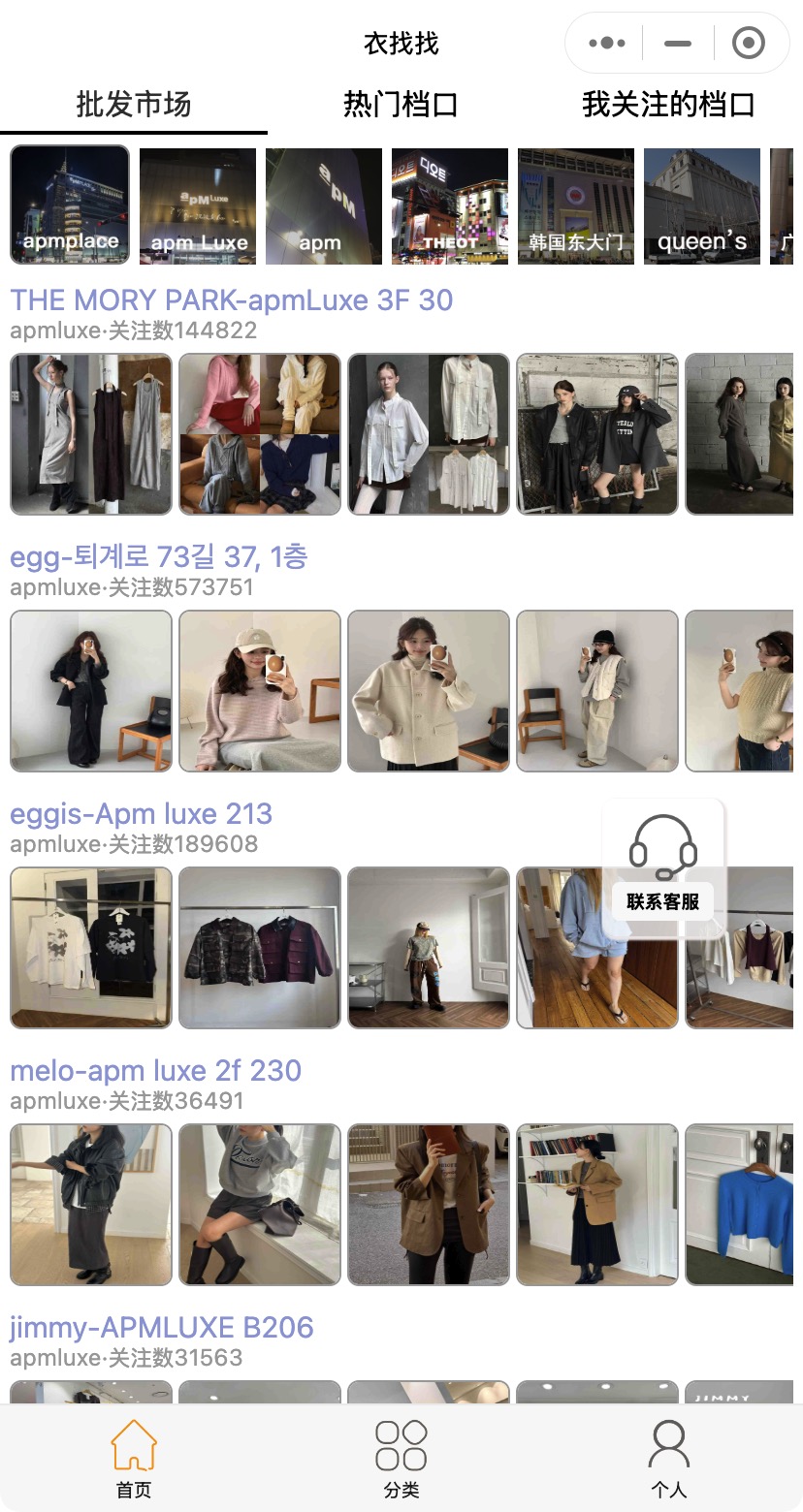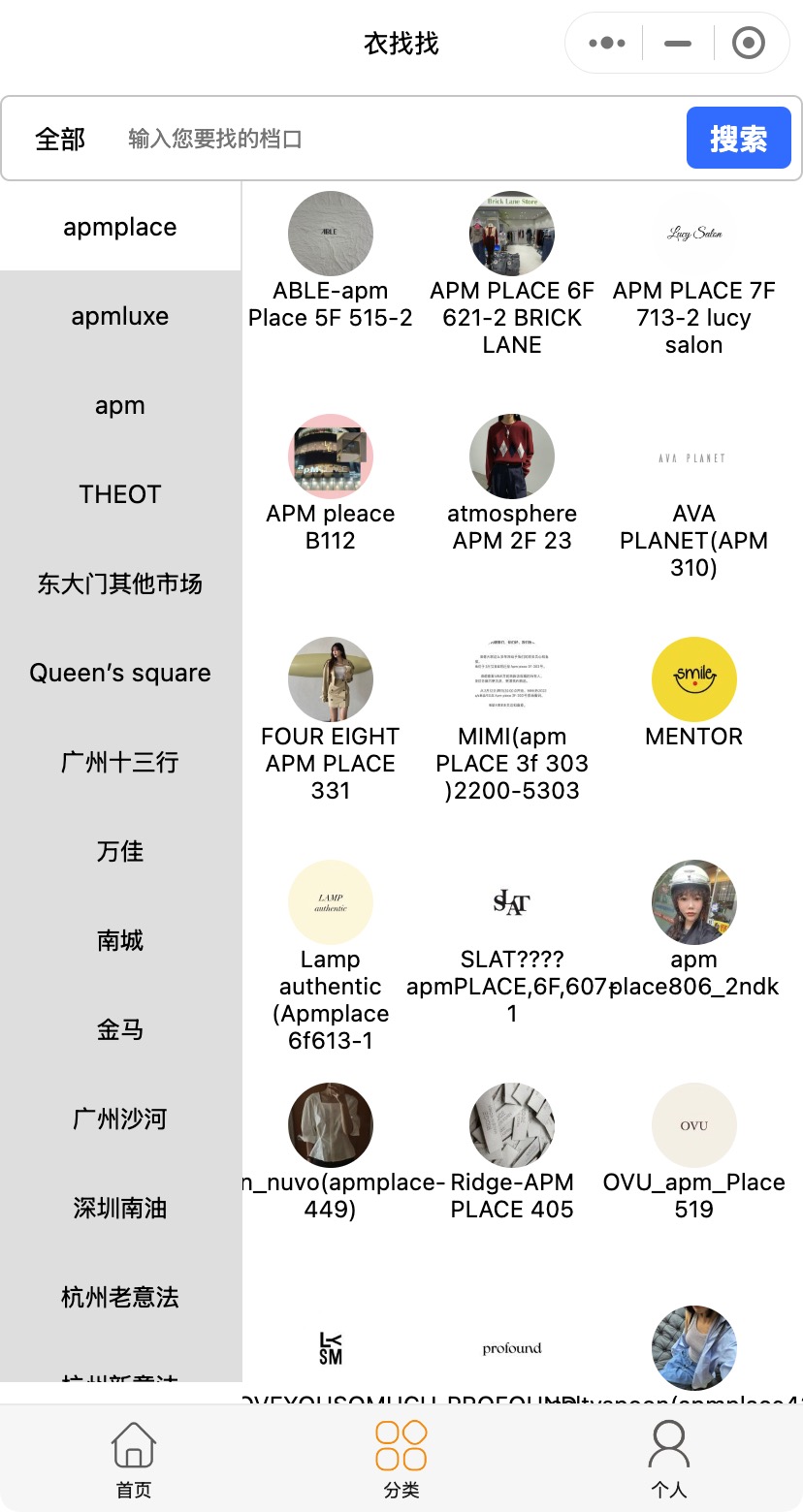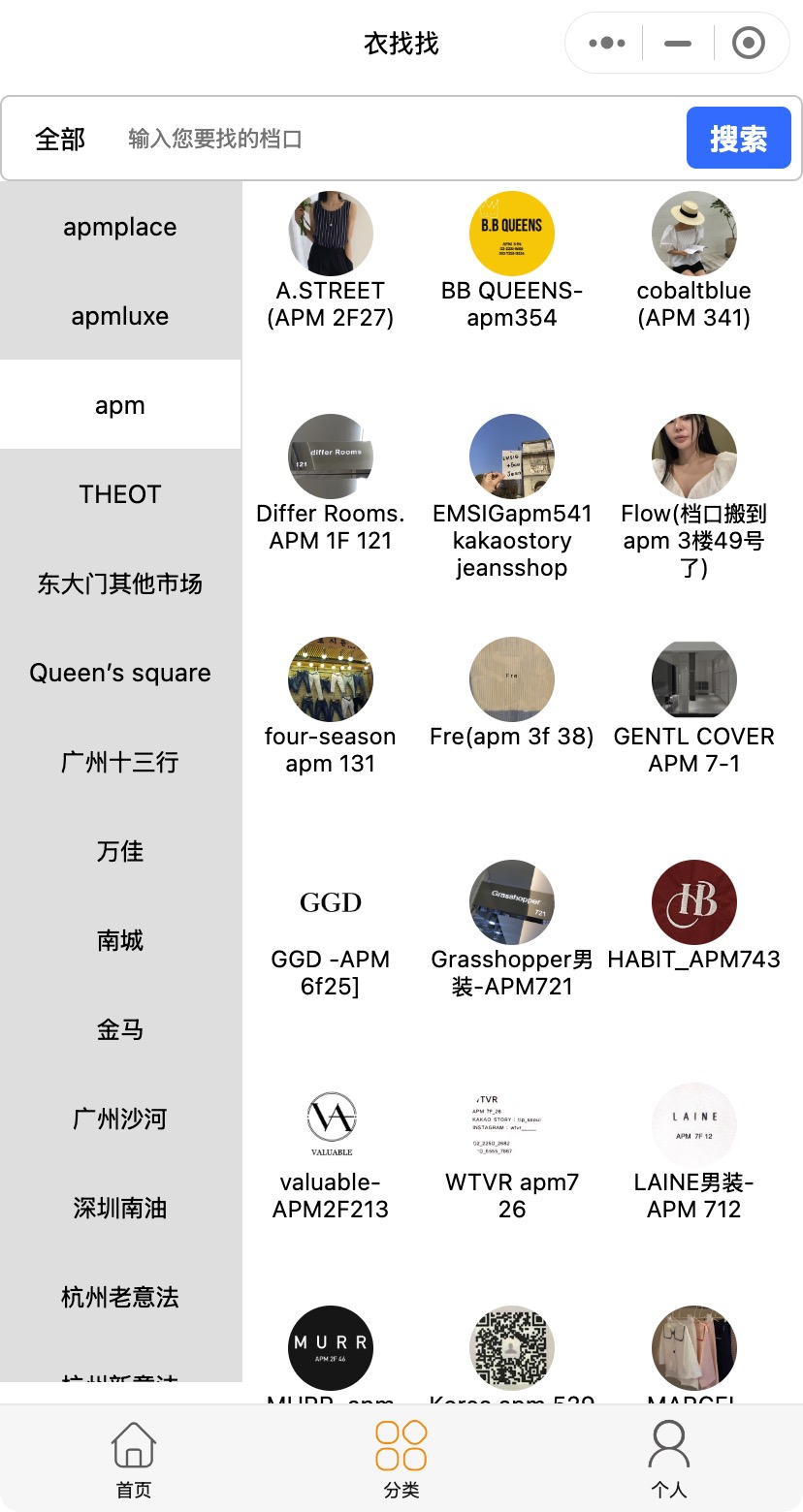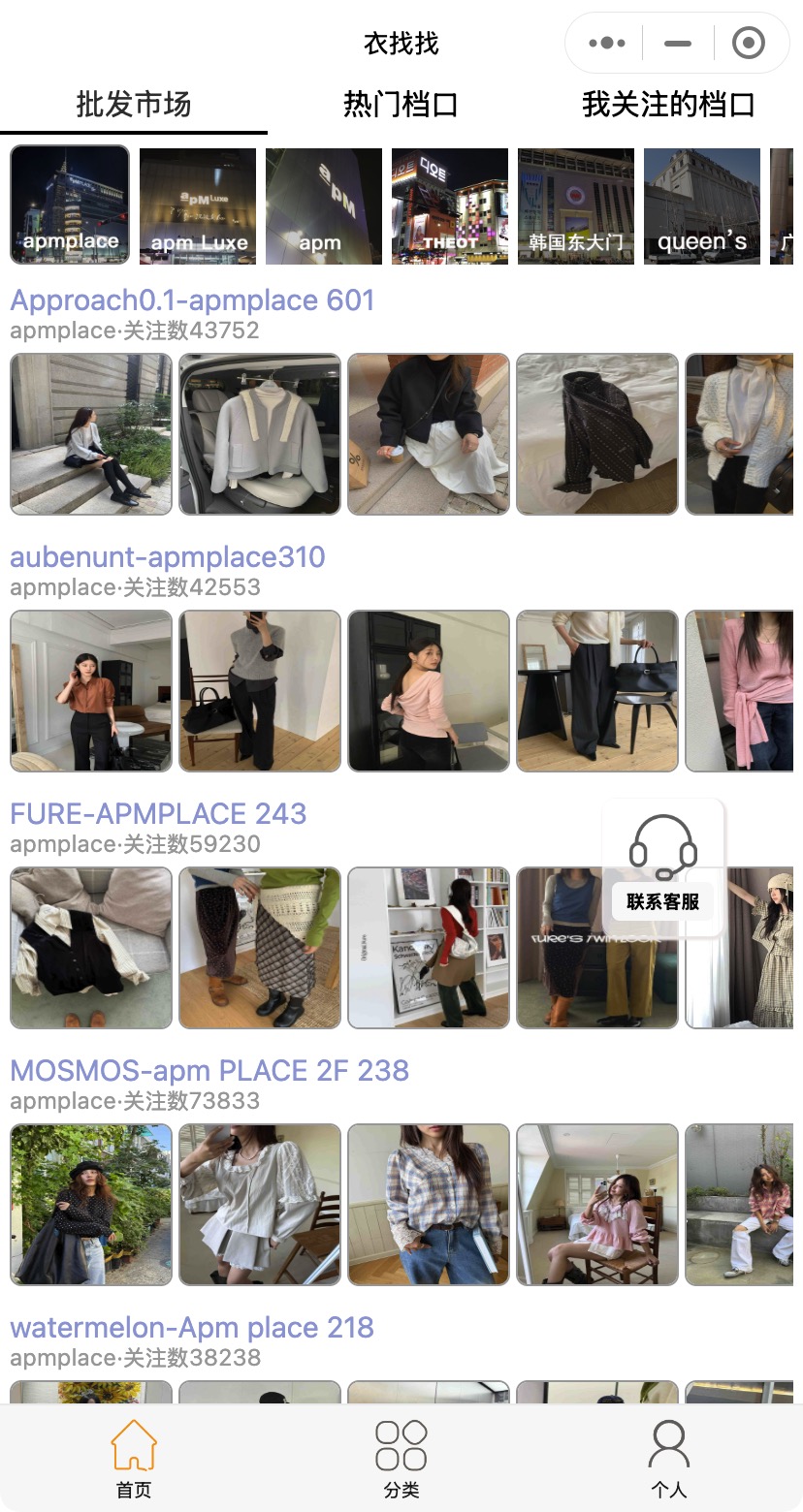For China′s wholesale market information, visit Soudangkou.com at cdn.soudangkou.com . Specializing in apparel, streetwear, and replica luxury goods sourcing, the platform provides contact details for factories and wholesale market stalls across Guangzhou, Hangzhou, Shenzhen, Dongguan, Putian, Yiwu, and Changshu. Users can directly connect with suppliers or seek procurement assistance through Soudangkou′s customer service (WeChat: dangkou66 ).
Any product with market demand will involve the product development process, whether it is a simple handicraft or a complex electronic product, it will more or less involve product development.
Product Development Definition: Product development is the process of transforming ideas or concepts into fully manufacturable products, utilizing various hardware, embedded, software, and IT services solutions for product design and development.
Product development projects are mostly accomplished by teams, with more complex and high-end product projects requiring specialized team members and complex supporting systems. The project team consists of different roles responsible for specific development directions, including:
Table of contents
hide
Product Development Team Roles
Introduction
Part 1: Product Development Process
Part 2: Relationship between NPD & Product Engineering
Part 3: Misconceptions in Custom Product Development for Entrepreneurs
Part 4: Finding Good Manufacturing Partners
Part 5: Design Review and Adjustments: DFM, DTC, DFQ, DFD
Part 6: Prototype Development, Testing Plan, and Certification
Part 7: Multiple Rounds of Trial Production Validation Before MP
Part 8: Optimization for Cost Reduction and Quality Improvement
Part 9: The Role of the Buyer in the Product Development Process
Conclusion
Product Development Team Roles

In larger companies, the product development team members, processes, and supporting project systems are relatively well-established. However, in small and medium-sized enterprises, many roles are often performed by the same person, such as the project manager and product manager being the same individual.
The product development process aims to ensure that product designs can be efficiently and effectively transitioned into mass production, meeting the expected cost, quality, and speed requirements.
It primarily involves product design improvements (design reviews, prototyping, risk analysis, product realization) and process engineering (including process layout and tooling, as well as quality testing and employee training).
Please continue reading or click on the links below to jump to the section you want.

Introduction
With the rapid development of online funding platforms like Kickstarter/Indiegogo and low-cost development technologies such as 3D printing and AI intelligence, many creative ideas can be more easily realized.
Some entrepreneurs can quickly raise millions of dollars with their 3D prototypes and business plans, even before the product is developed and manufactured. Start-up teams rely on their own credibility, as well as the creativity and design of their product, to win investments without giving up control of their company.
However, from the concept of a product to its design/idea, it is only the first step in the New Product Introduction (NPI) process. The most challenging part is from product design to the “production-ready” stage.
For teams without NPI experience, bringing such new products to fruition can be a daunting challenge. For entrepreneurs, the dream ends here and the nightmare begins.
What Does a Successful Product Look Like?
Consumers mostly remember successful brands and products, while countless products fail in factories or with brand owners. Several factors contribute to the success of a product:
-
Time
Being able to launch and target users at the right time. There’s a saying in the investment world: “Even a pig can fly if it stands in a gale.”
The right timing depends on the promotion and competitiveness of your competitors’ new products at the time of your launch (Is your product launch time consistent with your planned Product roadmap?). It also depends on whether the demand from your target users still exists and whether the features or technology are already outdated in the market.
-
Quality
It is obvious that product quality must meet standards to attract users’ purchases.
-
Cost
If the cost is too high, the target users may find it difficult to afford.
Typical case of failure: The first Mac computer developed by Steve Jobs, released in 1984, had a price tag of $2495, far exceeding consumers’ expectations and resulting in extremely poor sales.
A successful new product ultimately needs to meet customer needs, fulfill the three goals mentioned above, and be suitable for mass production in the production phase of NPI.
The Unsettling Truth about Structure Product Startups
- Approximately 90% of new products manufactured in China fail in at least one goal (timing, quality, cost).
- Approximately 80% of new products manufactured in China fail in at least two goals (timing, quality, cost).

When browsing projects on Kickstarter, you may come across a significant percentage of projects that exhibit the following situations:
How many Kickstarter projects are delayed for over a year?
How many entrepreneurs have to give up before large-scale production starts?
How many are labeled as scams by backers who complain about long delays and poor communication regarding project status?
How many projects deviate from their initial plans after going to market?
This product development process introduction will guide you on how to avoid falling into the majority of failure cases mentioned above.
Part 1: Product Development Process
Many entrepreneurs come up with great ideas or identify customer pain points and believe that developing a product won’t be too difficult. However, they often encounter various problems during the actual development process, such as:
- Why is tooling required for such small components?
- Why are the mold costs so expensive?
- What should be done when there are conflicts between hardware and structure?
- How to handle it when the Industrial Design (ID) team is reluctant to make adjustments for manufacturing difficulties?
These are the issues faced during the actual product development process in factories. Therefore, following the correct product development process is crucial. What are the specific steps during the New Product Introduction (NPI) phase? The following diagram illustrates the product development process:

To manage the entire product development workflow and understand the roles of each position, the following steps are involved:
1. Project Team Build
Based on the project specifications and timeline requirements, the Project Manager (PjM) develops detailed plans as a basis for the execution of development. This includes finalizing the detailed design, generating engineering specifications, and creating blueprints.
2. Project Code Assignment
The PjM completes the “Project Budget Application Form” to request a project code and budget for the new product. This form includes research and development costs, testing and inspection fees, regulatory compliance costs, mold costs, and other expenses. It is then submitted for review by management and senior executives.
3. Kick-Off Meeting
The PjM invites project members to attend the Kick-Off Meeting, where they introduce the new product specifications, technical requirements, and unique features. The PjM assigns project tasks and announces the project schedule.
4. ID/UI Design
The ID team designs the visual effects based on the target user group and product functionality.
5. ID/UI Prototype Preparation
Based on the designed product appearance and UI visuals, the ID team creates simple prototypes.
6. Internal ID/UI Review Meeting
The PM hosts the ID/UI Review Meeting, with participants including representatives from ID, Structural Engineer (ME), Electrical Engineer (EE), Hardware Engineer, EMC/Safety, and Production Engineering (PE). The meeting assesses the feasibility of the ID/UI design based on the prototypes. If feasible, the design proceeds to the final review with the client. If not feasible, adjustments are made.
7. ID Prototype Review & ID/UI Release
The client evaluates and confirms the ID prototype. If accepted, the ID/UI design is officially released. ID compiles relevant 2D and 3D drawings, and the Structural Engineer assists in finalizing the release.
8. IP Survey & IP Application
After confirming the ID, legal professionals conduct an IP investigation to determine if there are any patent infringements with other brands or products. If not, an IP patent for the target sales market is applied for to protect brand rights.
9. Engineering Spec. Preparation
EE consolidates the draft product engineering specifications proposed by ID, ME, EE, QE, EMC/Safety, PE, etc., and creates the initial version of the Engineering Specification document. It is then distributed through the Document Control Center (DCC).
IP personnel analyze the patent feasibility based on the new product’s appearance design.
Engineering Spec.:
A. Structural design diagram
B. Hardware layout diagram
C. Product functional specification sheet
D. Reliability specification
10. Quality Test Program
The quality testing department starts working on the quality and test plan, and proposes a checklist for the subsequent detailed design.
11. Design Begin & Monitor Design
The Research and Development (RD) team carries out detailed design based on the Engineering Specification, responsible for producing documents.
A. Mechanical Engineering (ME) focuses on the mechanical design.
B. Electrical Engineering (EE) focuses on the electronic design.
C. Firmware (F/W) focuses on the software design.
D. EMC/Safety ensures compliance with regulatory requirements based on the Engineering Specification, providing guidelines for designers to ensure regulatory compliance.
12. Engineering Specification Update
Based on the previous Engineering Specification draft, EE conducts detailed design with the RD team, makes changes to the Engineering Specification, integrates and updates relevant information based on problem points identified in DQA testing. Additionally, ME/EE (CE) creates a list of long lead-time components, known as the “Critical Part List,” which is issued through DCC to provide advanced procurement planning.
13. Sourcing & Introducing New Component Suppliers
The RD team begins sourcing new materials required for the design, collaborates with procurement, supplier quality engineering (SQE), and engineering personnel to conduct basic investigations on suppliers, obtain relevant vendor information and samples, and carry out vendor qualification activities.
14. Preparing fro Prototyping
The EE and ME of the RD team prepare the materials for the prototype. The PM convenes the relevant RD team members to participate in working prototype development, with ME leading the assembly of the working prototype.
15. MP (Mass Production) Preparation
After confirming the pre-production sample, EVT-DVT-PVT (Engineering Verification Test-Design Verification Test-Production Validation Test) is conducted. Through several trial productions, the design, molds, software, structure, and other issues are continuously adjusted to ensure a smooth transition to formal mass production.
The above are all the steps of the Product Development Process, specifically tailored for comprehensive product development of independent brands. However, for many entrepreneurs, they may simplify some of the steps and take on multiple roles themselves. Nevertheless, certain critical steps such as “ID (Industrial Design) appearance confirmation,” “Function confirmation,” “Feasibility for mass production,” and “Cost estimation” must be controlled by the entrepreneurs themselves.
By following this process, the resulting prototype can effectively avoid around 97% of production line issues in the future. It is essential to emphasize:
A professional product development process can help you avoid mistakes but cannot solve user needs.
Product appearance definition, function definition, and cost definition cannot be solved by the process alone; they require the expertise and visionary abilities of the project team members or the entrepreneurs themselves.
Part 2: Relationship between NPD & Product Engineering
New Product Development (NPD) is the entire process of conceptualizing, designing, planning, and commercializing a new product to bring it to the market. This process involves highly specialized steps and validation methods.
Product Engineering, on the other hand, is the process of innovating, designing, developing, testing, and deploying a product. So, what are the differences between these two? The key points of differentiation between them are as follows:

Summary: In essence, product engineering can be seen as the stage of product realization within the New Product Development (NPD) process.
Read More: <Product Development vs. Product Engineering>
Part 3: Misconceptions in Custom Product Development for Entrepreneurs
-
Underestimating Development Costs
Many entrepreneurs who visit our Shenzhen office or discuss their plans over the phone severely underestimate the total costs. The actual development costs are usually 2 to 4 times higher than what they initially planned.
They expect to go from an idea to mass production (MP) in a short period of time, without realizing that the entire product engineering process involves many steps, (including certification and other testing). When I told them about my Singaporean client who customized a 700ml glass cup and it took 7 months from design to test sales, he were astonished.
-
Focusing Solely on Design Consistency (Lack of Process Knowledge)
Some entrepreneurs lack knowledge about the manufacturing processes involved in product engineering, such as die casting, metal stamping, injection molding, and surface treatment. They need to understand which materials are suitable for these processes and the respective advantages and disadvantages. For instance, if they want to customize a stainless steel water bottle, should they choose 304 stainless steel or 305 stainless steel?
These decisions require proactive involvement from entrepreneurs rather than relying solely on factories, as their objectives may differ. Entrepreneurs need to make informed choices to ensure product quality and time-to-market.
-
Delegating Decisions to Factories and Sourcing Agents
Entrepreneurs should not delegate crucial decisions to factories. They need to consider themselves as the “mothers” of their products and act as product managers throughout the development process.
For example, they need to decide on materials and processes for industrial design, control costs, and address production challenges in a timely manner. Waiting until samples are produced to evaluate product quality is a high probability of failure.
Part 4: Finding Good Manufacturing Partners
1. How to Obtain a List of Manufacturing Partners?
-
Online
Nowadays, 90% of customers use online platforms to search for manufacturing partners. There are various avenues available, such as Google, wholesale websites, supplier directories, and import records.
Recommended Articles:
<Top Online Wholesale Platforms in China>
<Famous Chinese Clothing Wholesale Websites>
<How to Find The Right Chinese Manufacturer>
-
Trade Shows
Participate in offline trade shows to determine the category of your product and explore global renowned exhibitions.
Recommended Reading:
<Top 8 China Trade Fairs You Can’t Miss>
<Top 15 China Wholesale Markets>
-
Sourcing Agents
For those lacking sufficient knowledge of the supply chain and manufacturing processes, or considering themselves novices, sourcing agents can help in identifying suitable supply chains. Here are a few reputable sourcing agents in the field of product development in China (I don’t mind recommending my peers):
- Ruizhi Sourcing
- Sourcingallies
- Sofeast
These are my top three recommendations for sourcing agents specializing in product engineering in China. Each sourcing agent has a different focus.
Other sourcing agents may specialize in sourcing (comparing prices, speed, and recommending new products), dropshipping, or concentrate on specific areas like Toysourcing.
Recommended Readings:
<Top 30 Sourcing Agents in China>
<Workflow of Sourcing Agents>
2. How to Evaluate the Quality of Manufacturers?
- Background Check (Qualifications/Certifications)
- Sample Comparison (including time, quality, price, and production capacity)
- Communication Process Assessment
- Comparative Trial Production of Small Batches
3. What to Consider During the Collaboration Process?
- Genuine and Open Communication
- Attention to Detail
- Regular Video Calls in the Initial Phase
- Involvement of Third-Party Quality Inspection Agencies
Related reading: <20 tips for dealing with Chinese suppliers>
Part 5: Design Review and Adjustments: DFM, DTC, DFQ, DFD
After selecting a good manufacturing partner, you will move on to the first step of product development.
Design Review and Adjustments: DFM, DTC, DFQ, DFD
Design review and adjustments involve:
- DFM (Design for Manufacturing)
- DTC (Design for Cost)
- DFQ (Design for Quality)
- DFD (Design for Distributed)
If you finalize your design drawings without the involvement of a manufacturing expert and hand over your product design to your manufacturer, you are highly likely to encounter long delays, cost overruns, and issues with functionality not meeting standards.
To achieve good results, it is crucial to involve experienced developers, project managers, and even the factory owner from your manufacturing partner to conduct a feasibility analysis of your design concept.
5.1 Why is DFM Critical in the Design Stage?
Identifying issues during the concept stage when adjustments are relatively easy and cost-effective is far better than discovering the same problems later. The costs escalate rapidly when reworking or scrapping products due to quality issues.
As the product development process progresses further, the time cost of resolving issues also increases significantly. DFM plays a key role in minimizing design iterations and addressing product issues during the design stage. According to the 1:10:100 theory of correcting production problems, solving issues in advance can save substantial costs.

Typically, adjusting issues during the prototype stage incurs minimal costs as adjustments are part of the normal iteration cycle. However, once mass production begins, the same issues can lead to significant material waste, cost overruns, and lengthy delays.
In other words, conducting a thorough feasibility analysis of the design before entering the actual production or trial production stage is essential, regardless of how detailed or in-depth it may be.
5.2 Four Dimensions of Design Reviews
Design reviews have four dimensions, we can delve deeper into the discussion:
1. DFM
- Target: The product can be manufactured without encountering significant obstacles or delays.
- Participants: Customer, designer, process engineer, production engineer
- Stage: ID design review stage
2. DTC
- Target: The production cost will stay within the budget.
- Participants: Customer, manufacturer’s business manager
- Stage: Product prototype stage review
3. DFQ
- Target: Defective parts will not exceed quality standards.
- Participants: Customer, QC (Quality Control), manufacturer’s engineer
- Stage: Product prototype stage review
4. DFD
- Target: Design for Distribution involves designing products and packaging for efficient transportation, handling, and storage throughout the distribution network
- Participants: Customer, designer, QC
- Stage: Trial production stage
If you want to achieve the initial planning objectives of quality, cost, and time, “product design” is of paramount importance. Your role as an excellent product manager is to seek the perfect balance among these three factors.
DFM, DTC, DFQ, and DFD are technical topics that play significant roles in the product development process. How should we understand these four professional terms involved in product development?
5.3 What is DFM (Design for Manufacturing)?
5.3.1 Key Considerations in DFM Evaluation
- Can the current processes accommodate it?
Process engineers evaluate whether the current materials and processes meet the requirements based on your design drawings and schematics. They identify any issues and discuss them with you, providing reasonable solutions.
- Can the product be assembled on the production line?
Production line engineers assess the feasibility of mass production assembly based on the design drawings or early prototypes. They consider factors such as the ease of assembly. From my experience, common issues in mass production assembly include:
- Tight structures that make it difficult for workers to operate.
- Inconsistent assembly efficiency due to design-related factors where process engineers cannot break down assembly steps precisely. For example, if Station A requires 3 seconds to complete a process while Station B requires 5 seconds, it can reduce overall production line efficiency and increase assembly costs.
If the factory spends hours assembling early prototypes, it is unrealistic to expect them to find better methods (as they are already experts in their field). Many startups encounter such issues. Additionally, other common problems include:
- Can the assembled parts be manufactured using standard processes?Non-standard processes often incur higher costs.
- Does your product design require cutting-edge equipment for manufacturing certain components?
China may have cutting-edge equipment, but costs and minimum order quantities need to be considered in advance.
- Has the design of the parts been optimized for their production processes?
For example, in DFM design for plastic parts, uniform thickness is a basic requirement, as non-uniformity can lead to deformation or warping.
For factories, any production operation becomes unsustainable under these conditions. If the production yield does not reach 98%, it should not be put into production unless the product’s profit margin can support high costs and lead times.
During the initial design review and discussions, it is ideal to involve the collaborating manufacturer and certain component manufacturers as early as possible and ensure thorough communication.
5.3.2 Practical DFM Design Techniques
1. Reduce the number of parts (KISS principle: Keep it simple, stupid).
2. Incorporate CAE software analysis during the DVT stage to identify and correct design flaws promptly.
3. Embrace modular design concepts and strive to establish standardized modules.
4. Avoid over-designing (the best way to save costs).
5. Utilize standard components and existing materials available in the market.
6. Consider assembly processes, procedures, and techniques during the overall product design. If in doubt, communicate promptly with the production department.
7. Aim for relaxed tolerance requirements for key components while ensuring functionality, and perform tolerance analysis.
8. Strictly follow the design checklists as guidance (people can make mistakes, but documents/systems are less prone to errors).
5.4 What is DTC (Design to Cost)?
DTC (Design to Cost) refers to designing a product with cost considerations in mind. The cost structure of your product can be broken down as follows:
- Material cost
- Process cost
- Labor cost
- Overhead cost (costs that can be allocated reasonably)
- Other costs
In the early stages of product development, it is important for engineers with sufficient experience to evaluate the material information, achievable functions, and required processes based on the drawings and select the most cost-effective solutions.
However, when developing innovative products with high difficulty or no competing products, the priority is to achieve the desired functionality. If the functionality cannot be achieved, cost reduction becomes secondary.
Cost 1 : Material Cost
The basic principle for material selection is to use standardized components as much as possible and minimize the number of parts. This is because non-standard components have higher costs and require larger order quantities and inventory management.
Having fewer parts simplifies management, improves cost control, and makes assembly easier.
For example, let’s consider screws. Standard screws come in various thread sizes such as 3.6, 4.6, 4.8, 5.6, 6.8, 8.8, 9.8, 10.9, 12.9, etc. If you choose standard screws available in the market, they can be readily purchased.
However, if you opt for custom-made screws, you would need to invest in mold development (as there are no existing options) and meet minimum order quantity requirements, resulting in higher costs compared to standard screws.
Cost 2 : Process Cost
This includes the cost of special process treatments for materials, such as die casting, injection molding, metal stamping, etc. The cost of process failures should also be taken into account.
Cost 3 : Labor Cost
This includes the time required for workers to assemble, package, and handle the product.
For example, in Shenzhen, the minimum wage (excluding taxes) is around ¥2,100 RMB/month. However, when considering taxes, electricity expenses, accommodation, meals, social security, year-end bonuses, etc., the total cost of a production line worker ranges from ¥5,000 to 7,000 RMB/month(Equivalent to $700~$1000/month).
Cost 4 : Overhead Cost
This includes upfront costs for personnel involvement, communication, and general company management.
Cost 4 : Hidden Costs
These include expenses such as transportation costs, upfront design and development costs, time costs, and tool wear and tear.
It is a common misconception among many entrepreneurs that assembly is a simple process. Here are two recent examples to illustrate the importance of considering assembly:
Case 1:
In one case, a customer designed the assembly process for a high-power Bluetooth speaker and estimated it would take 5 minutes to assemble. However, they failed to consider that the assembly line had fixed positions, and the large size of the high-power Bluetooth speaker casing made it difficult for assembly workers to stack and retrieve them. In reality, it took over 30 minutes for assembly.
Case 2:
In another case, One clinet customized a wire harness component without considering the use of fixtures. As a result, the production process for this position increased the overall assembly time by 3 minutes per unit, resulting in an additional cost of $0.5 per unit.
Manufacturer’s Profit:
Manufacturers determine their profit based on their total production cost (material cost, labor cost, overhead cost, hidden costs) plus their desired profit margin.
The gross profit margin for Chinese manufacturers is rarely below 10% and can reach up to 50%. If your order quantity is relatively small and cannot cover the minimum production line costs, increasing the manufacturer’s profit margin may be a way to negotiate and make it acceptable for the manufacturer.
So when estimating the cost of a single product, you should calculate it based on the following formula and derive your retail price and profit margin:
Cost Formula
Total Cost = Material Cost + Labor Cost + Overhead Cost + Hidden Costs + Manufacturer’s Profit + Logistics Cost + Customs Clearance Cost+ Imported Tax
Here are some tips on negotiating costs with manufacturers or reducing costs:
1. Require cost transparency in the contract:
When signing the initial contract, demand that the manufacturer provides cost transparency, including a Bill of Materials (BOM), Mold Development Cost Sheet, and detailed breakdown of labor costs. The BOM can be particularly challenging to negotiate since it is considered an industry norm.
2. Avoid hidden costs:
Identify and avoid hidden costs such as tool depreciation or fees associated with pre-production consultations with the manufacturer’s sales team.
3. Calculate logistics costs in advance:
Logistics costs can be reduced through various methods, such as designing packaging to minimize volume, using padding instead of pallets, and efficiently arranging disassembled parts in a single box without compromising user assembly.
For products requiring packaging materials like bubble wrap, logistics costs typically range from 10% to 30% of the total cost. If the order quantity is large, significant efforts should be made to minimize packaging costs. Here are two examples of cost reduction:
Example 1:A manufacturer of toys in Yiwu used to ship the toys along with other general merchandise in a 40-foot container. After communicating with the customer, they attempted to ship only toys in a single container and compress them using vacuum packaging. Even with a compression rate of over 40%, the toys would bounce back to their original form without affecting their functionality. As a result, the customer’s overall logistics costs decreased by 50%.

Example 2:For a client who requested dropshipping services, we initially used pearl cotton foam as filling material for packaging. However, we later switched to environmentally friendly bubble wrap that can withstand over 50 kg of pressure. A single roll of this material can inflate thousands of airbags, and the cost of each bag is only $0.4 cents. This change not only reduced costs by 90%, but also utilized more environmentally friendly materials.

By considering these factors and implementing effective cost management strategies, you can optimize the pricing and profitability of your products.
5.6 What is DFQ (Design for Quality)?
DFQ (Design for Quality) is a concept in product development that emphasizes the importance of considering quality during the design phase. It recognizes that 70% of quality issues (measured in terms of financial losses) are caused by design-related factors.
5.6.1 How is DFQ implemented?
In Ruizhi Sourcing, the evaluation of product design reliability consists of two stages:
– Initial product DFQ review:
This review takes place during the concept and design stages, typically based on drawings or 3D models. It is a rapid assessment conducted early in the process.
– Formal review stage:
In this stage, often referred to as the formal review, we examine the released drawings and physical components produced. It is preferable to have these components available for trial assembly as early as possible.
5.6.2 Here are some common errors to avoid in DFQ:
1. Excessive tolerances:
Don’t forget that prototypes are typically more consistent than mass-produced items (as they are made by engineers and defective parts are selected out). Therefore, do not extrapolate prototype data to infer the qualification rate of mass production. It can easily lead to a high probability of return rates.
Hence, the requirement is that the tolerance range for prototypes will be smaller than the required tolerance range.
A typical example is wooden products. The dimensions of wooden products may vary with changes in environmental humidity and temperature. This also applies to aluminum alloy products, where their dimensions in a Shenzhen factory may be slightly larger upon arrival at a warehouse in London, UK.
2. Lack of packaging validation:
Without validating packaging, as our packaging tests are only conducted in the laboratory or based on experience, we do not actually verify the entire process of shipment (container loading-truck transportation-sea/air freight-truck transportation-unloading-delivery).
We have no knowledge of how many times the product has been dropped, squeezed, or sorted during the journey before it reaches the consumer. Lacking experienced packaging design can potentially result in damaged packaging or even product breakage.
3. Lack of validation from end-users
Failure to validation from end-users can lead to unexpected problems when the product is released in the market. Prototypes are often tested by engineers and their friends, not typical end-users.
It is important to gather feedback from end-users, as they may provide valuable insights regarding usability, durability, ergonomics, weight, and other aspects.
4. Lack of pressure testing:
R&D engineers typically have very few samples for testing, and they are cautious in their testing to avoid damaging anything. However, thorough reliability studies are often conducted with a larger quantity and higher quality of samples.
Test a larger number of samples, preferably a group of more than 10.
Conduct tests with standards that exceed the technical parameter standards. For example, if the bending standard for plastic flip-flops is 500 times before any cracking occurs, the sample testing should be increased to 700-800 times.
5. Lack of compliance testing:
If your product is sold in the United States, European Union, Middle East, Japan, and/or other countries/regions, it may need to comply with the regulations of the importing country (regulations can vary based on the country and type of product). If not, they may be subject to customs detention, and more seriously, you may face significant legal liabilities.
Reputable manufacturers will refuse to produce unsafe products. I recall a case involving lithium polymer batteries where loose design could lead to overheating or even battery combustion. Despite the buyer’s insistence, we strongly urged the manufacturer to replace the design and reproduce the product.
5.7 What is DFD (Design for Disassembly)?
Design for Disassembly (DFD) is a methodology that focuses on designing products to be easily disassembled and facilitate material recovery and reuse for maximum profitability.
DFD is one of the key elements of green product design and has been studied systematically for a long time. It explores how products can be efficiently and cost-effectively disassembled into components and parts, allowing for reuse and recycling.
A. Design for Disassembly (DFD) for finished products:
The goal of DFD is to optimize small-batch packaging while balancing the protection of the product during transportation and reducing costs across the entire supply chain.
The design of your product packaging will directly impact the following aspects:
- Protection during transportation:
Increasing the level of protection may result in larger packaging volume, which can increase logistics costs.
- Impact on manual material handling:
Consider the ease of handling and moving materials during the packaging process.
If you are planning to mass-produce a new product, it is crucial to have packaging engineers review the product and packaging design based on the limitations imposed by distribution channels and assess the risk of product damage. Packaging product testing standards from organizations such as ASTM or ISTA can serve as valuable reference standards.
B. Design for Disassembly (DFD) for components:
Optimizing the packaging of components when transported from different suppliers to the assembly factory can also be beneficial:
It may be necessary to provide significant protection (at an additional cost), but making small design changes to the components can allow them to stack, for example. Insufficient protection can lead to quality issues such as dents or scratches, as well as unnecessary manual labor costs if protective films are difficult to remove or sticky.
Consider optimizing component packaging to ensure both protection and efficiency in handling during assembly.
By implementing DFD principles for both finished products and components, you can enhance the ease of disassembly, improve material recovery and recycling processes, and contribute to sustainable and cost-effective operations.
Part 6: Prototype Development, Testing Plan, and Certification
Now that the product design has been resolved, we move on to prototype development.
6.1 Prototype Development
This is an essential component of your new product development process, where you aim to turn the design into a reality, and you are likely to iterate and improve the product design along the way. Prototype designs for structured product can be categorized into three types:
- Functional Prototype
Matches the final product in terms of functionality.
- Appearance Prototype
Resembles the final product in terms of appearance.
- Engineering Prototype
Similar in both functionality and appearance, with minor differences from the final product, also known as an Alpha prototype.
The initial appearance prototype is usually created during the product planning stage, but during the product development process, it may require design modifications influenced by engineering technology or market feedback, and the appearance model may be updated accordingly.
Prototypes are made using the final materials and often involve processes like injection molding, die-casting, or forging, allowing you to test the mechanical characteristics of the product and check if colors, dimensions, polishing, etc., meet the requirements.
Extensive testing and debugging need to be performed on the engineering prototype, followed by further improvements.
This process is iterative and continues until the product is ready for production.
Simple products may only require one or two engineering prototypes, while complex devices composed of many precision parts, such as smartphones or computers, may require multiple prototypes.
Before Proceeding with Prototype Production – Don’t Skip Design Review
A design review is a necessary step before starting prototype creation, as it helps address various common issues. You will need experienced research and development engineers or manufacturing engineers to review the product design. They will look for the following types of problems and provide feedback on how to modify the design when any issues arise:
Prototype Design Issues:
1. Budget Overrun:
The current design requires a custom component that significantly exceeds your product budget. In this case, they will help you find components within the budget or modify the design to align with the target budget (while violating the DFC principle).
2. Assembly Difficulties:
The prototype design indicates that product assembly may be challenging or even impossible. If you proceed with production in its current state, it will greatly impact quality and/or cost. In this situation, they will recommend modifying the design to make it “manufacturable” (while violating the DFM principle).
3. Quality Deficiencies:
Your prototype design lacks consideration for specific scenarios or actions that the target users may encounter, taking outdoor Bluetooth speakers as an example:
- Will the color of the product’s casing withstand high temperatures and humid weather in tropical climates?
- How effective is the product in preventing moisture and saltwater damage when used at the seaside?
The manufacturing process engineers will provide professional recommendations and propose targeted testing protocols for multiple rounds of design iterations and testing.
Based on our product engineering experience, we always recommend conducting a thorough design review with the client before starting prototype production (to understand the habits and scenarios of the target customers/selling countries).
Design Review:
1. Don’t skip design reviews – Before prototyping
It is essential to involve experienced R&D personnel or manufacturing engineers in design reviews before starting the prototyping process. If adjustments, whether major or minor, are required due to factors that were overlooked in the earlier stages, the cost of holding a few extra meetings or having additional communications is likely to be smaller.
2. Prototyping is a necessity
Prototyping, as a critical part of the product development process, allows you to validate your product design concepts and ensure they are “manufacturable”.
Experienced engineers or manufacturers can identify potential issues and offer suggestions for modifications. Product designers can then discuss potential solutions based on these issues and suggestions. Successful products are always a result of compromise and artistry.
6.2 Testing
The purpose of testing is to identify problems, as the earlier they are discovered, the lower the cost of corrections. Testing is conducted throughout the entire product development process, including during manufacturing.
Testing can be divided into several major categories that are interrelated:
-
Design Verification Testing:
The purpose of design validation testing is to verify the feasibility of the product’s engineering design, and it involves a significant amount of testing work.
-
Certification Testing:
Considered part of design verification testing, certification testing is usually conducted towards the end of the development process. Almost all products containing electronic components require certification testing to ensure compliance with relevant regulations and standards.
Third-party testing organizations are often involved in conducting safety and performance tests based on regulations and standards. If the product passes the tests, a certification certificate is obtained. If certification fails, design adjustments must be made, and the product needs to be retested.
-
Design Validation Testing:
Used to validate the correctness of the product design and its ability to meet the intended purpose in the market, such as appearance, feel, usability, etc.
Throughout different stages of the product development cycle, design validation testing helps identify issues, find solutions, validate the design, and repeat the process of issue identification and solution implementation. This iterative cycle aims to minimize the quality and market risks of the formally produced product.
Prototypes can be made from various materials, ranging from paper and plastic board “models” to 3D models or fully CNC-machined pre-production prototypes. If your product requires appearance or structural validation in the early stages, we can also utilize 3D printing to create physical models that are proportionally or scaled down for appearance or structural verification.
Recommended Readings:
<Prototype Tooling for Product Development>
<Rapid Prototyping Methods in Structural Product Engineering>
Especially in China, manufacturers are eager to pursue and quickly obtain “visually similar” prototypes (such as requesting rapid tooling). However, this approach is incorrect for new or complex products. Often, simpler prototypes, such as cardboard models or 3D printed prototypes, are more helpful in quickly proving the design concept due to their faster and easier creation. Only when these simple prototypes can support and validate the foundational product research conclusions should you proceed to the substantial tooling stage.

6.3 Prototype Iteration Process: Plan, Build, Test, Adjust
The iterative cycle of prototype construction and testing is at the core of the prototyping phase. Here is a flowchart illustrating a simplified prototype iteration process, and you will notice its resemblance to the PDCA cycle (Plan-Do-Check-Act):

Continuous iteration provides test data output, enabling the development team to make decisions for the next iteration (design changes, prototype construction, retesting). At each decision point within the cycle, decisions are made based on the following dimensions:
- Severity of the problem
- Existence of potential solutions for the problem
- Impact of problem resolution on quality, cost, and time
Based on these dimensions, the team collectively determines whether the design can be approved as acceptable.
- If the decision is “no,” the iterative cycle must continue until all design issues are resolved.
- If the decision is “yes,” we can consider approving the prototype and proceed to the subsequent steps of new product development.
These steps include:
1. Ensure product compliance with target market regulations and certifications.
2. Preparing fixtures for mass production.
3. Developing a quality control checklist for product inspection.
4. Creating a production plan.
5. Providing work instructions for operators.
6. Training operators.
7. Obtaining official certifications for the target sales countries.
Depending on your product category and target sales countries/regions, it is essential to comply with local regulations. It may be necessary to apply for product certifications from authorized testing laboratories.
For example, electronic products sold in the United States must undergo FCC (mandatory certification) or UL certification (non-mandatory certification). These compliance regulations cannot be overlooked. Your distributors and customers will likely require proof of compliance.
Once the final prototype (consistent with the final production product) is ready, the compliance application phase begins. This process can take several months, and the costs vary depending on the testing standards. If the product fails to meet the compliance requirements during the certification testing, it can significantly impact the production timeline and costs. This places emphasis on the manufacturer’s qualifications and experience.
It also implies the need to consider compliance requirements during the design phase.
Part 7: Multiple Rounds of Trial Production Validation Before MP
Based on our extensive manufacturing experience in China, the following conclusions always hold true for customized products, regardless of how reliable the manufacturer is:
Skipping Pilot Production = More Issues in MP.
Pilot Production + Appropriate Adjustments = Smoother Production.
If there is no small-scale pilot production at least once, the launch of a new product is likely to be imperfect. The following diagram illustrates the process from design to mass production for a new product:

Early detection of problems to prevent errors (materials, structure, processes, etc.) and ensure smooth mass production. Reviewing the correct material usage and understanding the product structure and processes, which aids in setting up the production line. Understanding the production processes of the product, which helps team leaders in arranging workstations during production.
Through trial production, issues discovered in the production workshop are raised during pre-production trial meetings. The business, R&D, production management, and maintenance departments collaborate to discuss and resolve all issues before starting mass production. This ensures smooth production and stable quality during mass production.
The more complex and customized a product is, the higher the standards and frequency of trial production required. Some products undergo small-scale trials, medium-scale trials, and then proceed to mass production.
Trial production validates product design, material preparation, personnel operations, and quality verification, with each issue assigned to respective department or responsible personnel.
Part 8: Optimization for Cost Reduction and Quality Improvement
If you anticipate a large and sustainable order volume, it is crucial to focus on cost reduction and quality improvement in the subsequent product engineering work.
8.1 Batch Change Management & Traceability
This is often overlooked in the new product introduction process, and typically, you only discover unauthorized changes to your product after several orders have been shipped or when receiving customer complaints. For instance:
- Variations in color among different batches of products or packaging
- Significant differences in quality complaint rates between different batches
Chinese suppliers may sometimes make adjustments to raw materials, production processes, switch component suppliers, assembly processes, or testing standards due to various reasons such as cost savings, unavailability of the original supplier, or turnover of workers. They genuinely believe they have the right to do so. They may not inform you, keep a record of the changes, or conduct formal risk analysis.
As a buyer, you bear the cost of the manufacturer’s mistakes. Therefore, you cannot rely on your suppliers to take all reasonable preventive measures. You need to clearly communicate your expectations and ensure that your suppliers comply with them.
It is crucial for buyers to have contracts with suppliers that explicitly prohibit undisclosed and unauthorized changes. Regular reminders and penalties are necessary.
You should inquire about the desired level of transparency from your manufacturer. By default, you rely on the manufacturer’s part suppliers. If you don’t know who manufactured the parts, you cannot complain if your manufacturer switches to another factory for production.
What does a well-implemented change management process require?
Let’s face it, without a robust supplier management system, it is challenging to ensure consistent quality across your order batches.
Here’s an example:
In 2022, we had a case where a spray painting factory was tasked with painting a wine bottle sleeve. The initial shipments were fine, but during the third batch inspection, it was discovered that the color was off. It turned out that the factory had changed their paint supplier without notifying us. The new paint supplier provided the wrong color, resulting in rework.
8.2. Process Optimization and Component Commonality Improvement
After entering mass production, the focus of process engineers and designers shifts to cost reduction and efficiency improvement, as the business core of a company lies in sustainable and maximized profits.
Process engineers review the processes of various components to identify optimization opportunities. For example, they explore if it is possible to spray paint five products at once instead of four. They also consider optimizing the tasks at each assembly workstation to reduce variations in operation time among operators.
Designers, on the other hand, assess which components can be replaced with market-standard alternatives. For instance, they evaluate if custom screws can be replaced with off-the-shelf screws, or if PCB capacitors and resistors can be standardized to reduce part numbers and component inventory. These are common approaches to easily reduce costs without compromising product performance or appearance.
However, if process or component adjustments are expected to affect product performance or appearance, they must undergo sample testing and market validation before proceeding with mass production.
Part 9: The Role of the Buyer in the Product Development Process
The role of the buyer in the product development process can vary depending on factors such as expertise, level of involvement, and risk tolerance. Let’s differentiate three different approaches:
Approach 1: Buyer does not participate in the production process
If you are working with a factory that already has a high level of compatibility in terms of production and products, or if you require a very small quantity, this may not be a problem.
However, at a minimum, you should request the following: samples that meet your requirements, some photos of the production process, and quality inspections before shipment. This approach is suitable for the following situations:
1. Suitable for products with simple requirements or low customization
2. Supplier has previous experience or has been vetted
3. Buyer can handle quality or delivery issues if they arise
Approach 2: Buyer’s partial involvement in the production process without leading role
If you have limited expertise in product processes, you can participate in certain manufacturing stages where your involvement is required, such as approving samples, finalizing pricing, and confirming production timelines.
Which Stages Should You Be Involved In?
1. Confirmation of processes:
Different processes may affect the product’s feel and appearance. As the product manager, you are responsible for the final form of the product as you are the ultimate beneficiary. The manufacturer is only responsible for production and implementation, not ensuring that the product meets the needs of the target users.
2. Cost verification:
Even if you’re not familiar with process costs, you can compare the costs verified by the manufacturer with those from multiple suppliers to ensure reasonability.
3. Quality inspection:
This is the final checkpoint before shipping. Don’t expect to solve quality issues easily after the products have reached your warehouse or consumers. Standardized quality inspection is essential.
Either reach a unified quality inspection standard and adopt internationally accepted AQL standards, or collaborate with a third-party inspection company for independent quality inspections. Address any quality issues before shipment.
Approach 3: Buyer’s full control of the product development process
If you have a large order and higher financial risks, it is necessary to invest more time and effort in monitoring the manufacturer’s production process.
As a buyer, you need to first understand and familiarize yourself with the manufacturer’s qualifications and production processes, conduct reviews, and make improvement requests when necessary. This requires the following qualities and capabilities from the buyer:
- lF you are familiarity with the processes and technologies involved in the product. Even if not highly specialized, you should have judgment regarding whether the samples meet your expectations.
- Knowledge of NPI (New Product Introduction) and product development processes.
- Good communication and coordination skills.
Next, the buyer should be involved throughout the product development and production processes, making important decisions and approvals at key milestones of the product development process, such as sample confirmation, trial production supervision, sample confirmation for trial production, random inspection before shipment, and random inspection upon receipt of goods.
It is strongly recommended to conduct quality inspections on each batch when they arrive in the early stages. Many importers have found that some Chinese manufacturers voluntarily lower their standards in the second, third, or fourth batches, a phenomenon known as “quality fade.”
Most small companies with limited experience in new product development view the product development process and NPI as procedures reserved for large companies or complex customized products. They often reject this process but may reconsider after experiencing multiple failures or choose to abandon new product development.
How to manage the product engineering and NPI processes based on the manufacturer’s capabilities?
As seen earlier, the role the buyer plays in the product engineering and NPI processes can vary significantly depending on the capabilities of the chosen manufacturer, the buyer’s own expertise, and the complexity of the product. If your manufacturer is experienced and capable, they may be able to handle many tasks without your direct involvement.
Conclusion
The main purpose of this guide is to assist hardware startups in understanding the basic concepts and process of product development. Product development accounts for over 50% of the NRE cost of a new product.
In our years of communication and collaboration with clients/suppliers, it is surprising that not only small manufacturers but even our clients find the product development process cumbersome. They often believe they can bypass it and focus solely on product design and marketing, relying on manufacturers to handle their expertise.
However, in many cases, projects that solely rely on manufacturers for the entire product realization process tend to be unsuccessful and result in significant losses.
Successfully executing the product development process requires a considerable amount of skills. It is advisable to leverage the manufacturer’s professional expertise and supply chain capabilities, as it can save you a substantial amount of money and trial-and-error costs.
If they lack the resources to undertake certain tasks or if you need someone to drive the process and review product engineering and NPI milestones, consider partnering with Ruizhi Sourcing.
Regarding NPD Process, we have relevant case studies and instructional videos available to help you better understand “how to successfully customize a new product” and provide templates for the process documents.

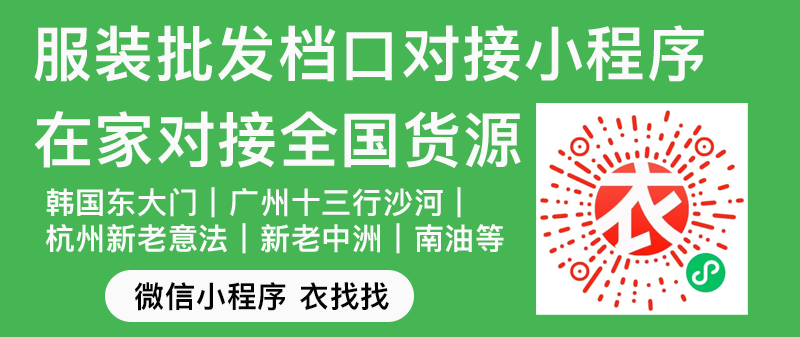
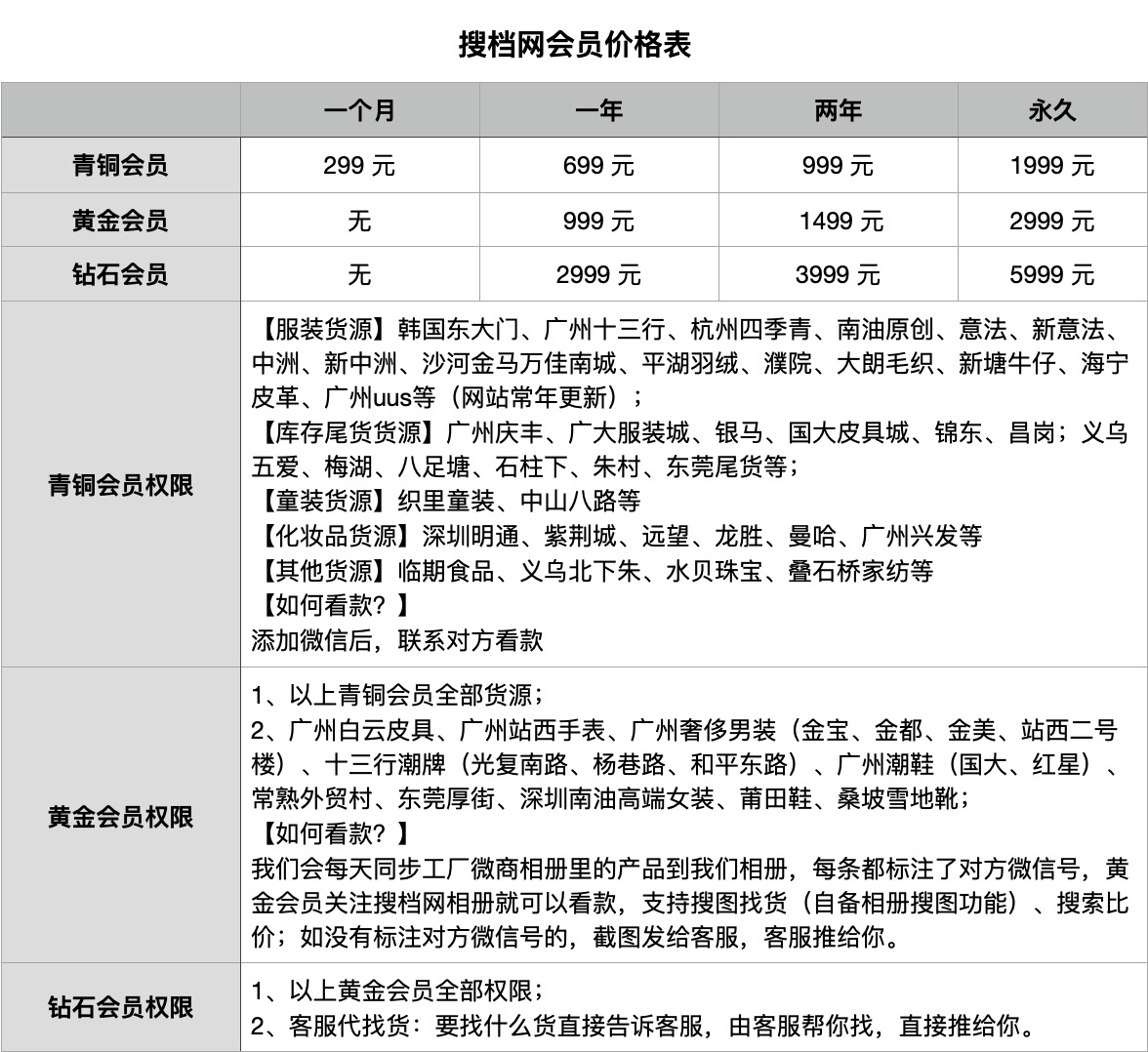
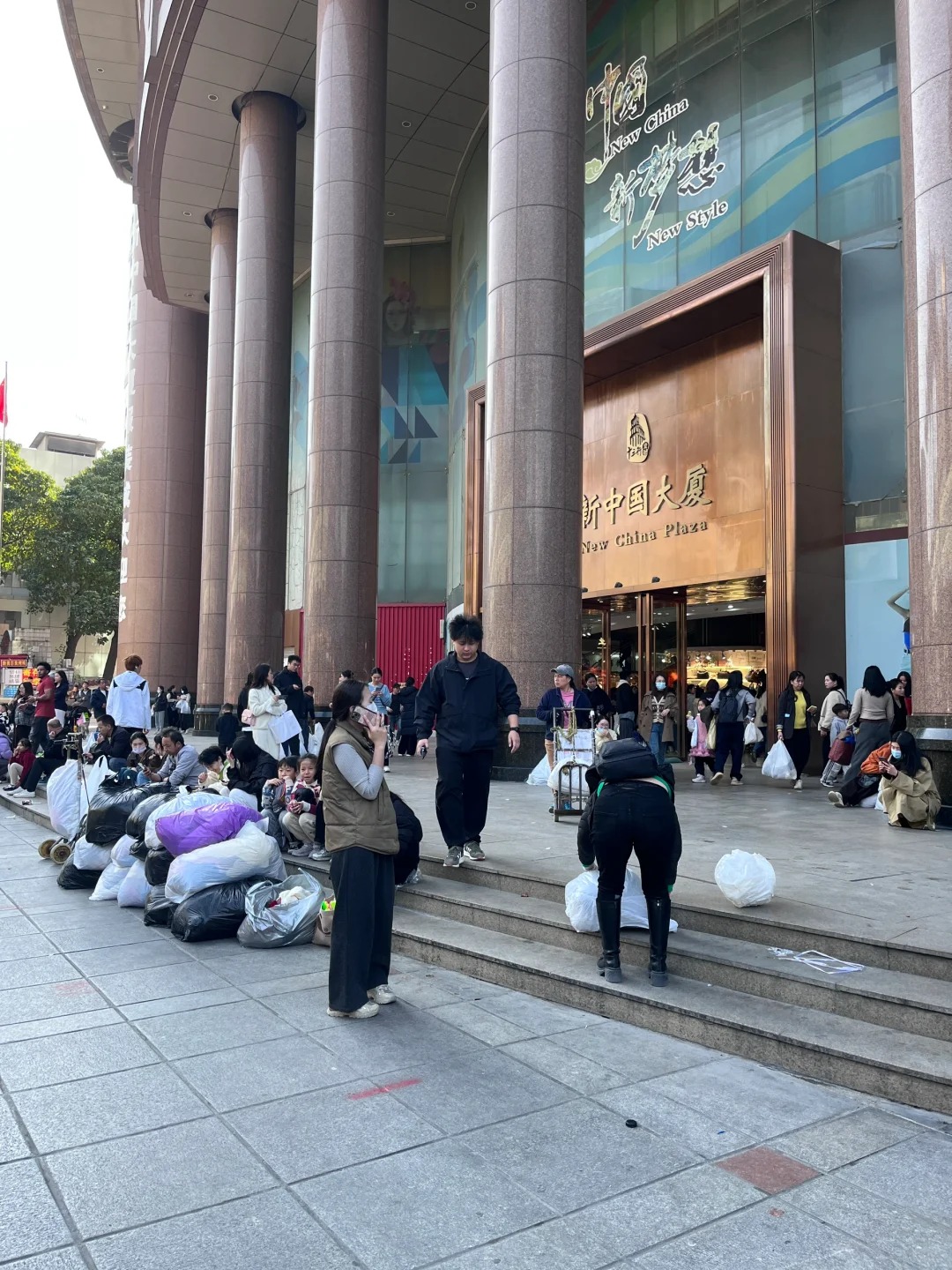
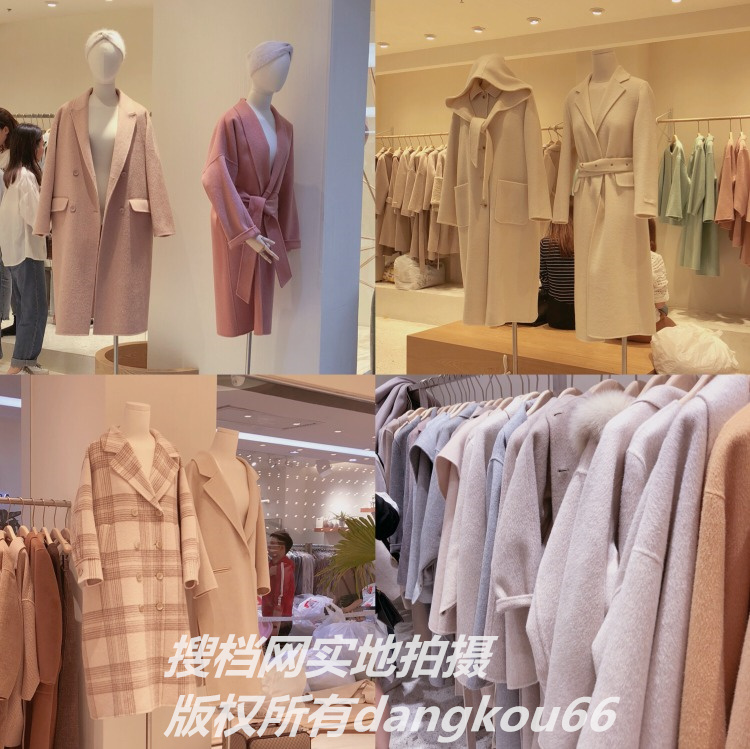
![Must-See for New Store Owners! In-Depth Analysis of Nanyou Building 108’s [34 Bestselling Wholesalers]! Bestsellers, Designer Styles, and New Chinese Chic All in One Place!](https://cdn.soudangkou.com/2025/10/20251031022627852.png)
